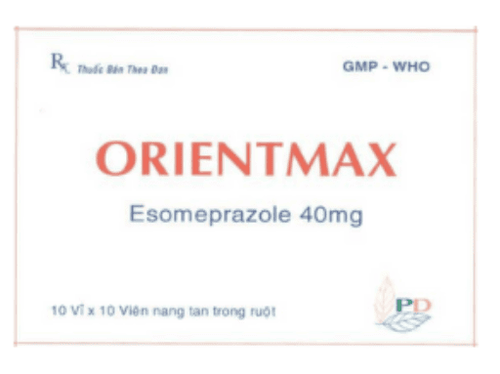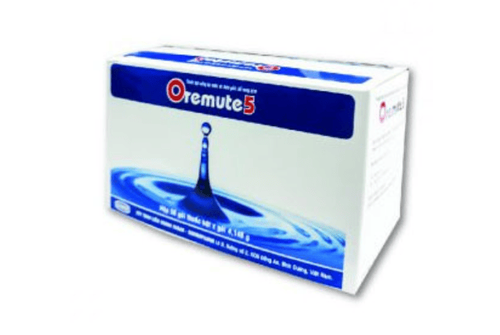This is an automatically translated article.
Children with vomiting that lasts for hours or even days and then disappears for weeks or months and recurs is a telltale sign of cyclic vomiting in children. Current treatment focuses on controlling signs and symptoms with basic classes of drugs such as anti-nausea, analgesic...
1. Introduction to cyclic vomiting syndrome in children
Cyclical vomiting syndrome in children is characterized by episodes of severe vomiting of unknown cause. Episodes can last for hours or days and alternate with periods of no symptoms. Episodes are similar, which means they tend to start at the same time of day, last about the same time, with similar symptoms and severity.
Childhood vomiting syndrome can occur at any age but usually begins in children between 3 and 7 years of age. Although the disease is more common in children, the number of cases diagnosed in adults is increasing.
In general, when it comes to cyclic vomiting in children, diagnosis is often difficult because vomiting is a symptom of many different digestive disorders. Treatment usually includes lifestyle changes to help prevent the trigger that causes episodes of vomiting. In addition, doctors can use medications that help relieve symptoms such as antiemetics and migraines that can be highly effective.
2. What are the symptoms of cyclic vomiting in children?
Symptoms of cyclic vomiting syndrome in children usually begin in the morning as follows:
Three or more episodes of vomiting that started at the same time and lasted for a similar period of time; General health is normal and there is no feeling of nausea between episodes; Feeling nauseous and intense sweating before an episode begins; In addition, other signs and symptoms of cyclic vomiting in children include abdominal pain, diarrhea, dizziness, photosensitivity, and migraine headaches. When a child has cyclic vomiting, parents should call the doctor if they see blood in their child's vomit. In addition, persistent vomiting can cause severe dehydration, the consequences of which can be life-threatening. Therefore, parents also quickly take their child to the hospital if there are symptoms of dehydration, such as excessive thirst or dry mouth, urinating less, dry skin, sunken eyes or cheeks, no tears when crying, the child looks exhausted and listless.

Hội chứng nôn chu kỳ ở trẻ em được đặc trưng bởi các đợt nôn ói dữ dội
3. Causes of cyclic vomiting in children
The underlying cause of cyclic vomiting syndrome in children is unknown. Some of the suspected causes are genetic factors, digestive problems, nervous system problems, and hormone imbalances.
In addition, specific vomiting episodes can be triggered by:
colds, allergies or sinus problems; Emotional stress or excitement; Anxiety or panic attacks; certain foods and drinks, such as chocolate or cheese; Overeating, eating right before going to bed or fasting; Hot weather; Physical exhaustion; Exercising or moving too much; Travel sickness . Identifying the triggers that cause cyclic vomiting episodes in children can help control the disease more effectively.
4. How to diagnose and treat cyclic vomiting in children
Cyclical vomiting syndrome in young children can be difficult to diagnose. Because there is no specific test to confirm the prerequisite diagnosis and vomiting is sometimes a sign of many conditions that need to be ruled out first.
The doctor will begin by asking about the child's medical history, exploring the pattern of symptoms the child has experienced. Your doctor may then recommend tools to aid in the diagnosis, including:
Imaging studies: Such as endoscopy, ultrasound, or CT scans to check for blockages in the digestive system or other organs. signs of other digestive conditions; Evaluation of gastrointestinal motility to monitor the movement of food from the mouth to the stomach; Blood tests to check thyroid function and other metabolic conditions. Unfortunately, to date, there is no effective cure for cyclic vomiting syndrome. Fortunately, however, many children no longer vomit by the time they reach adulthood. Current treatment focuses on controlling signs and symptoms with the following basic classes of drugs:
Anti-nausea drugs; Analgesic; Stomach acid suppressants; Antidepressants; Antiepileptic drugs. In addition, if a child is very dehydrated from vomiting, intravenous fluids may be needed to prevent further dehydration and related complications.

Nguyên nhân cơ bản của hội chứng nôn ở trẻ em theo chu kỳ vẫn chưa được biết rõ
5. Complications that can be caused by cyclic vomiting in children
Complications that can be encountered in children with cyclic vomiting syndrome include:
Dehydration: Vomiting a lot and not eating enough will make the child lose water quickly and severely. Severely dehydrated children who cannot drink water through their mouths may need hospital treatment. Esophageal damage: Acid in the stomach that accompanies vomit can damage the esophagus. Sometimes the esophagus becomes so irritated that it bleeds. Tooth decay: Acid in vomit can erode tooth enamel, especially baby teeth.
6. Ways to prevent cyclic vomiting syndrome in children at home
Lifestyle changes can help limit the signs and symptoms of cyclic vomiting syndrome. These children generally need enough sleep. When vomiting begins, parents need to reassure the child to lie on the bed and sleep in a dark, quiet room.
Once the vomiting phase has stopped, it is very important that the child drink plenty of fluids. Some children may feel well enough to start eating a normal diet as soon as vomiting stops. But if your child doesn't feel like eating, encourage him to eat some soup or drink milk, to rehydrate and ensure energy, and then gradually add solid foods.
If vomiting episodes in the child are observed to be caused by stress or excitement, avoid giving the child triggers, reassure the child in the event of an event. Also, feeding your child small meals and low-fat snacks daily, instead of three large meals, can also help.
In summary, cyclic vomiting in children is an uncommon disorder characterized by recurrent episodes of severe nausea and vomiting. While the exact cause of cyclic vomiting in children is still unclear, there are a number of risk factors that have been identified and parents need to know to help prevent their children at home, helping them to lead a better life. most comfortable and pleasant.
References: mayoclinic.org, frontiersin.org, ncbi.nlm.nih.gov













